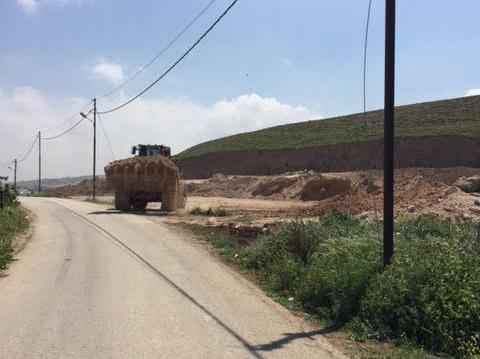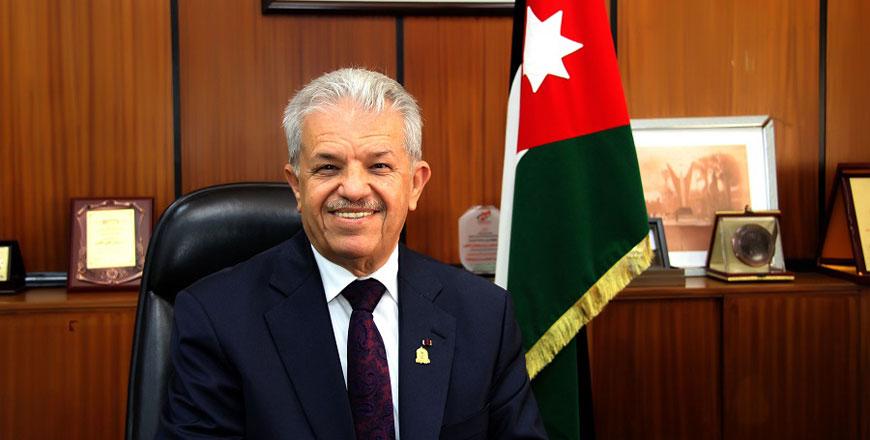You are here
'Community needed to preserve archaeological sites'
By Saeb Rawashdeh - Jun 04,2017 - Last updated at Jun 05,2017

According to Jordanian scholar Zeidan Kafafi many archaeological sites were either completely or partially bulldozed (Photo courtesy of Zeidan Kafafi)
AMMAN — Community archaeology, which seeks to empower and involve local communities in the protection and preservation of their shared past, is a relatively new approach within the wider discipline of archaeology, according to a Jordanian scholar.
For Professor Zeidan Kafafi it means to leave part of the control of the project to the local community.
Kafafi was speaking at the 8th International Conference on Science and Technology in Archaeology and Conservation held at Al Hussein Cultural Centre in Amman in May.
“Archaeological sites were created by people, not only found and excavated by them,” he noted, stressing that these sites were constructed through time and transformed the history, heritage and human behaviour of nations.
Heritage and conservation have become important issues in current discussions on cultural identity and the preservation of the past, the veteran archaeologist underlined.
Despite the fact that thousands of archaeological sites are recorded, some having been excavated in three Jordanian geographic zones (the Jordan Valley, the mountain ranges and the badia), several of these sites were either destroyed or protected by the local communities, Kafafi added.
According to the professor, the archaeological work in Jordan must put the local communities at the heart of the protection and preservation process.
“It has been argued that engaging communities in the long-term archaeological fieldwork and in restoring and conserving the archaeological sites on year-round programmes that focus on local employment, training and education, will help in protecting the cultural resources,” Kafafi stated.
He added: “The best example for this case can be seen at the 'Temple of the Winged Lions' project, which has been started in Petra since 2009 as a joint collaboration between the American Centre of Oriental Research, the Department of Antiquities [DoA] and the Petra Archaeological Park.”
Kafafi supervised and participated in excavations of several archaeological sites in Jordan. Most of these sites are located in the Jordan Valley (Abu Hamid, Deir 'Alla, Tell Hammeh and Tell Damiya) and some others on the high ranges region (Jabel Abu Thawwab, Ain Ghazal, Eh-Sayyeh, Es-Sukhneh, and Wadi Shu'eib).
Unfortunately, many of the above mentioned sites were either completely or partially bulldozed, he underlined.
"For example, the site of Jabel Abu Thawwab was demolished in the operation of widening the main Amman-Irbid Highway, and the Eh-Sayyeh site was completely bulldozed by the landlord for cultivation purposes [as he claimed]," Kafafi explained.
Even the Neolithic site Ain Ghazal was partially bulldozed in 2011 with the aim of building a school, Kafafi said.
Sites threatened by bulldozing operations are not limited to those located in the Jordan Valley and the mountain area region, but also extend to sites located in the badia.
"For instance, during a visit to the Meshash excavations in 2016 and 2017, I have noticed that the north and east walls of the Umayyad Meshash Palace had been bulldozed by treasure hunters. It appeared that the landlords of those sites were the ones behind this awful deed," the scholar said.
When it comes to archaeological sites located amid urban settlements, or even more isolated sites, local communities often hold two differing attitudes, according to the scholar.
We can see local communities react positively and actively engage in the protection of archaeological sites, Kafafi explained, while adding that the second attitude can see local communities expressing, at best, ambivalence, and at worst, destroying the sites, either in the hunt for presumed treasures, to cultivate the land or to construct buildings.
The property status of those sites, whether common or private, plays a decisive role in protecting and preserving them, he noted.
Kafafi questioned the financial capability of the government to support the preservation of the cultural heritage: "I believe, in this case, that local communities and international institutions, which are either involved or interested in conserving and presenting the cultural heritage, should step in, interfere and become a part of the decision making process regarding the cultural heritage."
This interference should be reflected by helping the DoA financially and providing the experience needed, the expert suggested.
"I assume that all actors, public and non-governmental organisations are responsible and must be part of the process and responsible for the sustainability of this cultural heritage for future generations," Kafafi concluded.
Related Articles
AMMAN — Evidence of human occupation in wadis from the Jordanian central massive goes back to the Palaeolithic period as it was evidenced in
AMMAN — Some of the main issues regarding the preservation and protection of cultural heritage are urban development, looting, and vandalism
AMMAN — The abundance of water in Wadi Al Zarqa enabled the region around archaeological site of eh-Sayyeh to establish a “very attractive”














